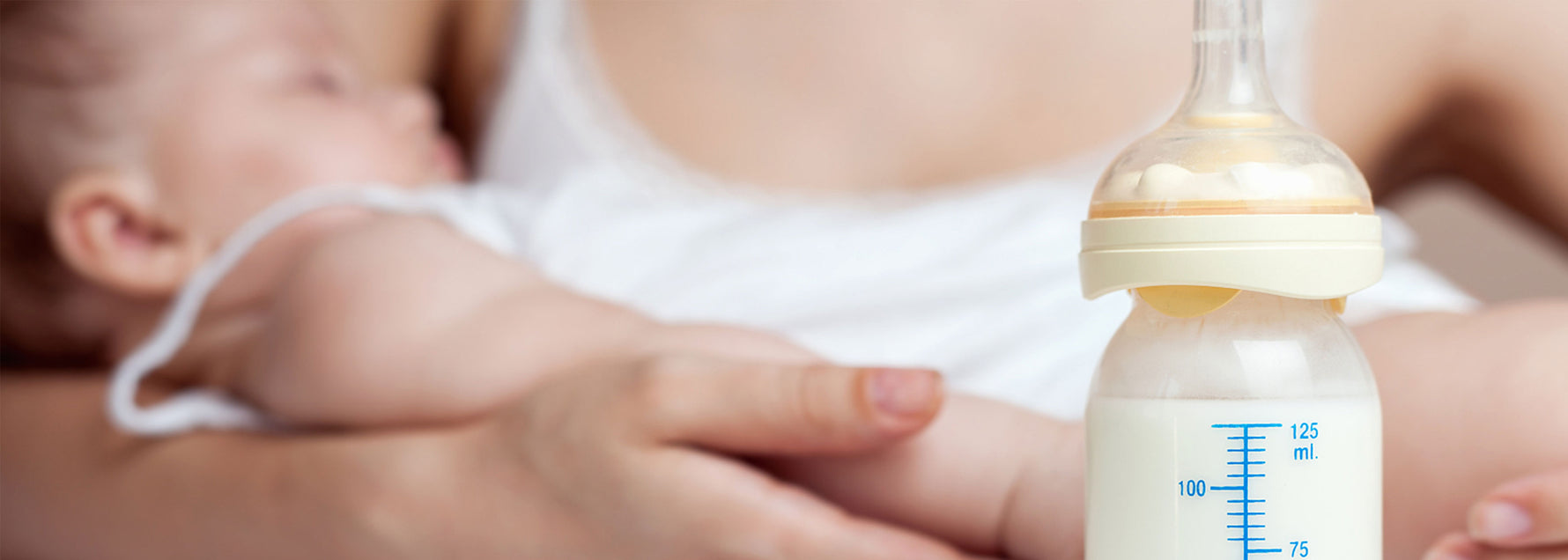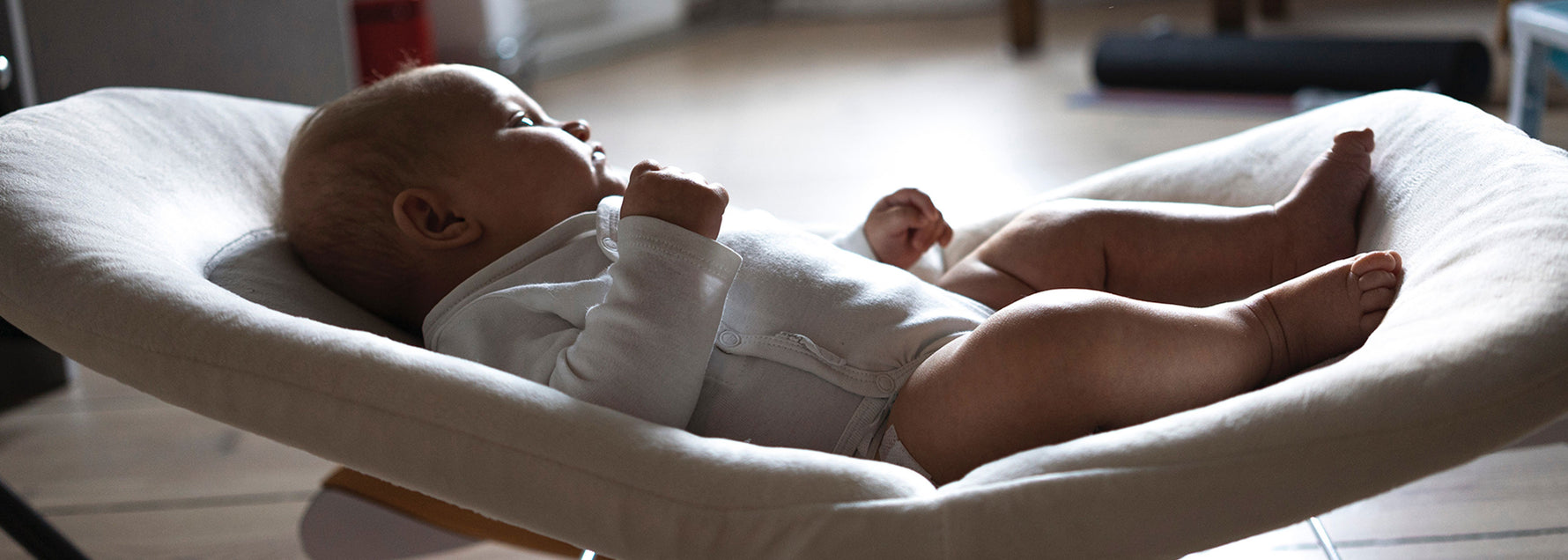Pregnancy & Breastfeeding Tips for New Moms: Preconception, Pumping & Parenting Support
When you step into motherhood after giving birth, you’ll be swept up in the challenges and joys of recovering physically and caring for your baby. Understanding how to effectively manage physical and emotional changes can help you recover faster.
Here, we dive into practical tips to help you through the postpartum recovery period. From your body to supporting your mental health, you’ll have a smoother transition to life with your new baby.
How Long Does Postpartum Recovery Take?
The length of time it takes new mothers to recover from childbirth varies, depending on factors such as how they delivered their baby (vaginal or cesarean), their overall health, and their personal circumstances. So here are some common timelines and stages to consider:
Early Postpartum (First 6-8 Weeks)
During the first few weeks after childbirth, often called the "fourth trimester," your body begins to return to its pre-pregnancy state. During this time, your uterus contracts, and postpartum bleeding (called lochia) begins to subside. This adjustment period allows your body and emotions to begin to stabilize, but you may feel tired and slightly uncomfortable during the process.
Extended Recovery (Up to 6 Months)
Over the next few months, your body continues to heal, and you may begin to feel more like your old self, especially if you experienced tears or cuts during childbirth. However, your hormones are still adjusting, which can continue to affect your skin and mood. This is the stage where you need to heal your body and adjust to motherhood.
Full Recovery and Adjustment (Up to a Year or More)
Some people recover as soon as six months after childbirth, while others may take a year or more. This is less about physical healing (which mostly gets better on its own) and more about adjusting to life with a new baby. Your parenting efforts will be more intense, your emotional and mental health will need to adjust, and you may notice ongoing changes in your body structure and strength.
What to Expect During Postpartum Recovery?
There are many physical and emotional discomforts new mothers may experience during their postpartum recovery period. So, let’s take a look at some common symptoms and how to cope:
Vaginal Bleeding and Discharge (Lochia)
Postpartum bleeding, or lochia, is the natural shedding of the uterine lining and will continue for several weeks. It starts as a red discharge that may contain clots and gradually becomes lighter in color. Therefore, using sanitary napkins instead of tampons can reduce the risk of infection, and changing sanitary napkins regularly to maintain hygiene. In addition, if the bleeding is unusually heavy or has an unpleasant odor, contact your doctor immediately.
Vaginal Itching, Pain, and Swelling
If you have a tear or surgical incision during childbirth, you need to pay attention to itching, pain, or swelling in the vaginal area. The area should be kept dry and clean, and cold compresses should be used to help relieve discomfort. If symptoms worsen, it may indicate an infection and it is best to seek medical advice.
Difficulty in Urinating and Defecation
After childbirth, you may find it difficult to urinate or defecate due to loose pelvic floor muscles or psychological factors. If urination is difficult, it is recommended to listen to the sound of running water or stimulate the urination process with warm water. If you are constipated, increase your fiber intake, drink more water, and use a mild laxative if recommended by your doctor.
Uterine Contractions
After childbirth, your uterus contracts to return to its pre-pregnancy size, and this process can be painful. You can try using a heating pad to relieve the pain. If you have severe discomfort, you can also choose to use painkillers as prescribed by your doctor.
Breast Problems (Such as Swelling and mastitis)
Swelling can make your breasts hard and painful, and if not properly treated, it may lead to mastitis, which presents with breast swelling, and pain, and is often accompanied by fever. Therefore, breastfeeding regularly or using breastfeeding products - portable breast pumps can help relieve discomfort. Or gentle breast massage and warm compresses can also relieve pain. Be sure to see a doctor if symptoms persist or worsen.
Mood Swings and Postpartum Depression
It is normal to have mood swings after childbirth, but if you continue to feel sad or anxious, this may be a sign of postpartum depression. You need to share your feelings openly with family and friends or seek professional mental health support.
Fatigue and Lack of Energy
New mothers often feel exhausted from night feedings and caring for a newborn. You can try to rest when your baby is sleeping, or ask family or friends for help with baby care and housework. In addition, you can also use breast milk storage bags to store milk in advance, and you can directly use a baby bottle warmer to warm the milk at night so that you will not be so tired during breastfeeding.
Pelvic Floor Problems (Such as Urinary Incontinence)
After delivery, you may experience pelvic floor muscle weakness, which leads to urinary incontinence. Therefore, you can regularly perform pelvic floor exercises, such as Kegel exercises, which can help strengthen muscle function. However, if the problem persists, it is recommended to consult a physical therapist for professional guidance.
These tips can provide you with personalized advice for your postpartum recovery. If you have any concerns or discomfort, please speak with your healthcare professional.
Body Care Tips for Your Postpartum Recovery
Recovery from childbirth is a natural process, but there are some effective body care tips that can help new moms recover faster, reduce discomfort, and promote overall health. Here are some common helpful tips:
Balanced Nutrition: As a new mother, you need more than just rest; you also need a nutritious diet to support your body's recovery and the quality of your breast milk. So, try to maintain a varied diet, such as high-protein foods, iron-rich foods, and plenty of fruits and vegetables. Also, remember to drink plenty of water - staying hydrated is key to helping milk production and restoring energy.
Get Enough Rest: Caring for a newborn may disrupt your normal sleep patterns, but try to rest when your baby is sleeping. Your body needs time to repair and recover, and adequate sleep is the best way to help you regain your strength and mental clarity.
Proper Exercise: After delivery, try gentle activities such as walking or taking a postpartum yoga class to help promote blood circulation and restore physical strength. As recovery time increases, you can gradually increase the amount of activity, but it is best to consult a doctor before starting a new exercise.
Postpartum Body Care: For mothers who have experienced tearing or cesarean sections, it is very important to keep the wound clean and dry. Gentle cleaning and appropriate use of cold compresses can help relieve pain and swelling. If you feel that you need extra support, consider trying a postpartum support belt or belly band to help relieve discomfort in your abdomen and back.
Emotional Health: As a new mother, you may experience a range of emotions, which is completely normal. If you feel depressed or anxious, don't hesitate to seek support from family or friends, or seek professional help. Remember, you are not alone, and asking for help is important for the health of you and your baby.
Medical Support: Don't underestimate the importance of regular postpartum checkups, as they are an important way to monitor your recovery. If you experience any physical or emotional discomfort, be sure to communicate with your doctor in a timely manner. Your medical team will support you and ensure that you recover safely and smoothly.
By using these care measures, you can help speed up your postpartum recovery, improve the quality of life of new mothers, and return to your pre-pregnancy state faster.
Mental Health Tips for Your Postpartum Recovery
Postpartum recovery is not just about physical recovery, it also includes psychological and emotional adjustment. Here are some practical daily mental health tips that I hope will help you during your postpartum period:
Practice Mindfulness and Meditation: Taking a few minutes each day to engage in mindfulness or meditation can make you calmer, which can help soothe your mind and make you feel more comfortable coping with the busy life of a new mom.
Routine: A routine that includes self-care is not only helpful but essential. It brings a much-needed sense of predictability and control to your new life, helping you avoid stress during the journey to motherhood.
Journaling: Journaling is a great way to process the emotional rollercoaster of postpartum. You can vent, reflect, and record your feelings, helping you find patterns and moments of progress in your process.
Therapeutic Walks: Going for a walk, whether with a stroller or on your own, can be surprisingly enjoyable. The fresh air, exercise, and change of scenery can instantly lift your spirits and provide a rush of pleasant endorphins.
Support your mental health during the postpartum period by adopting these practical methods to provide a smoother, more emotionally balanced recovery.
Related Reading: Tips for Moms to Shop for Their Newborn




















